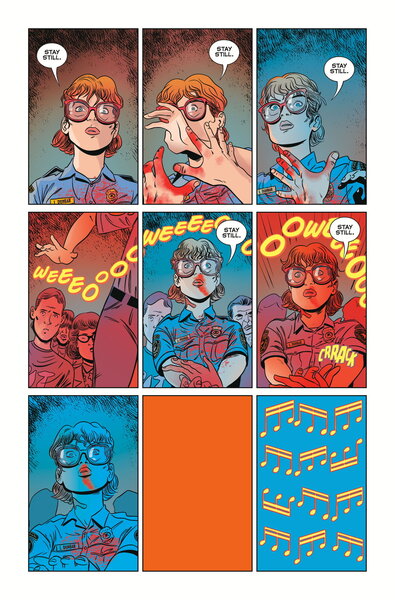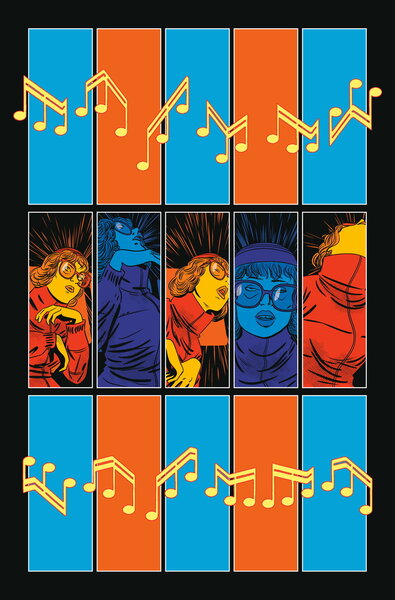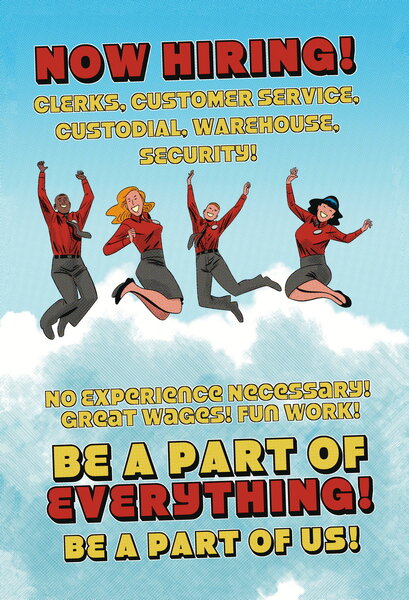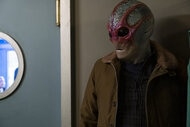Create a free profile to get unlimited access to exclusive videos, sweepstakes, and more!
Dark Horse Comics’ Everything and the scary side of '80s mall nostalgia
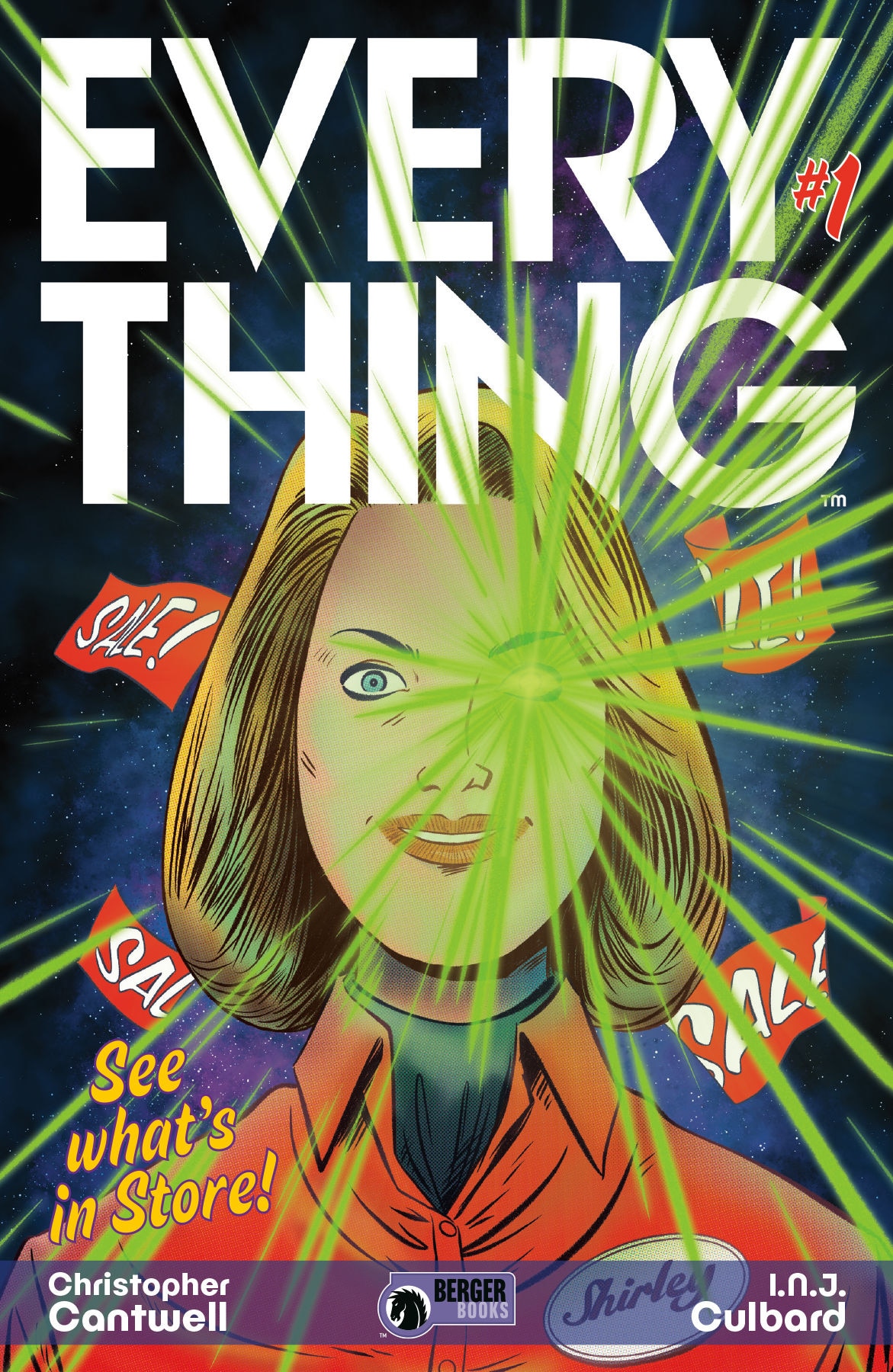
It's a boom cycle for shopping mall nostalgia, at least in genre fiction. The most notable example of recent vintage was Stranger Things 3's Starcourt, but malls are making a big return in comics as well, as evidenced by Everything, from Dark Horse Comics' Berger Books imprint and created by writer Christopher Cantwell (co-creator of AMC's Halt and Catch Fire) and artist Ian "INJ" Culbard.
Share with us where the idea for Everything came from.
Christopher Cantwell: I've always been fascinated with giant department stores. I spent a lot of my youth in malls with my mom. Then you look at the internet with Amazon, which has become a real everything store where you can get a noise machine ... um …
A snorkel mask! I just got those recently off Amazon.
Cantwell: Yup, and you can get an old-school compass for math. I've always been interested in the mail-order block business. Right after She Could Fly went so well, I was talking to Karen [Berger, of Berger Books], and we had such a great experience from it, and she said, well, if you think of anything else ... so I went off for a while and the idea of the Everything store came into my head. An evil department store seems fun, but it's too simplistic of a term, evil, in describing the store. There are a lot of complex machinations going on in the background in terms of what they're trying to do.
How did you get involved in the project, Ian?
Culbard: Karen got in touch with me about the project and it spiraled out of control from there [laughs]. She sent me the pitch document, and we had a conversation, and I was really excited by the concept because it's set in the 1980s. It was something I could really relate to and I can really remember it distinctly.
Also, from the UK perspective, having the Blockbusters arrive. I used to work at a video rental store when that impacted the UK, so I was aware of that and I could completely see what the building dread and terror was going to be like in Everything. It's not instant horror, but you get this uneasy feeling and definitely something that was in this, which is lovely.
Since the retail experience is something many of us can connect to, how much did you play with the nostalgia of it? What made it an interesting setting for you?
Cantwell: As an adult, looking back, there's this sense of community, [imitating fake sincerity voice] "Let's all come together and have some fun and buy stuff!" It's that kind of creepiness that comes with an artificial smile, right? Let's take that to the extreme. What happens there? What kind of people work there? What do they look like? Do they just want to expand? To what end? Some of our main characters are on the outside, like small businesses. Are they going to get crushed? Or they just don't get it. There are a lot of questions and mistrust of what this place is.
Culbard: There's a shot in the first issue in which I have an escalator going off into a white, blinding light, as if it's going off to Heaven. That the kind of promise that consumerism has. I grew up on both sides of the Iron Curtain; I spent much of my childhood split between Poland and the UK. I can actually remember crossing the border in Berlin at midnight, from West Germany to the East at the Berlin Wall. When you're on the West side, it's all bright lights and neon and money. You go to the East, and it's just pitch black until you reach Poland. I remember the first time McDonald's appeared in Warsaw, and it's right near the Palace of Culture, which is this big, monolithic building. The impact of the West, in terms of the East, looking at that there's a promise of something else, but also a cost as well.
Thinking in those terms and setting off those juxtapositions is quite an interesting thing to be able to do. Just being on the cusp of 1980 is nice, too, because you'd assume it's all shoulder pads and rolled-up sleeves, but that doesn't come until much later. What we're really looking at is the decor and design of the '70s, and it's nice to play around in that era of design and simplicity.
INJ, you colored the series as well. It's really punchy, with bright blues, reds, and oranges. Was there a specific design to the palette?
Culbard: I was aware that there was a lot of artificial light in those things, so you never knew what time of day it was outside. We actually talked about it quite a lot, where the local stores were warmer colors.
Cantwell: I don't know where the blues and orange came from, but I started reading about color harmonics and acoustic harmonics, how you can disrupt both of them, and change what is being seen and heard. There's a character named Rick who starts looking into acoustic harmonics, and a character named Lori who is having these visions of blue and orange that are vivid and striking, blocking everything out. She begins to wonder if there's something to the color harmonics being disrupted by the store. It's the science fiction idea of a massive disruptor coming to a community.
Everything is being conceived as having multiple five-issue arcs, which is nice, because you can play in a longer form of storytelling.
Cantwell: No one is really suspicious of the store until later in the story, but that speaks to the ongoing nature of the series. I'm a huge fan of Twin Peaks, and just weird, dreadful stories that build a little slower. We can have that suspicion grow, but we don't have to answer it immediately with craziness.
You set the story in Holland, Michigan. I've actually been there, but I'm curious to your choice in setting.
Cantwell: I've never been there. I've never been to the state of Michigan. I've seen pictures.
Culbard: You totally fooled me, because I totally thought you lived there. [Laughs]
Cantwell: To back it up a bit, my wife and I live in Southern California, and we have droughts, a water shortage, and get earthquakes on occasion. It's a weird time in America right now, and you start to think, what places are left that you can feel okay waking up in the morning? I started to research nice places to live in America that are affordable and this-and-this-and-this-and-this ... Holland, Michigan, was on this list, and I was obsessed with Holland for weeks.
Then you realize that it's just in your imagination: "The Holland in your head is just a fantasy," as my therapist would tell me. That's the Holland that's in this. It's quiet, sleepy, and unchallenged, as I think America used to be, and is now not. Here comes Everything to sit in the middle of it and say, it's all changing. It's a place that's perfect to be disruptive. No one is going to see it coming in Holland, Michigan.
Culbard: When he's writing the script, in terms of where locations are in the city, I know exactly where they are, and so I know what has to be in the background, geographically, in terms of where they travel to. So it's really good fun, and a visually interesting project to work in that way.
Thematically, is there something about "Everything" that goes beyond the store?
Cantwell: Yeah, I think so. People will open this up and see a little bit of everything in it.
Check out our entire four-page exclusive preview of Everything below, and be sure to put your preorders in now so that you can get the full issue at your local comic shops on September 4.
